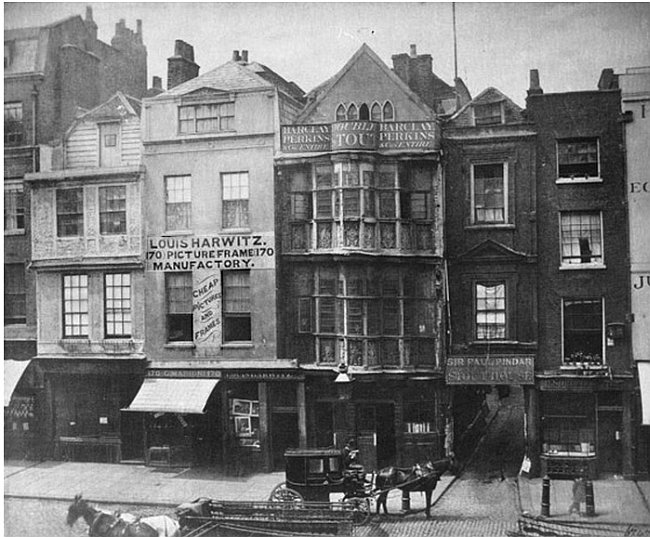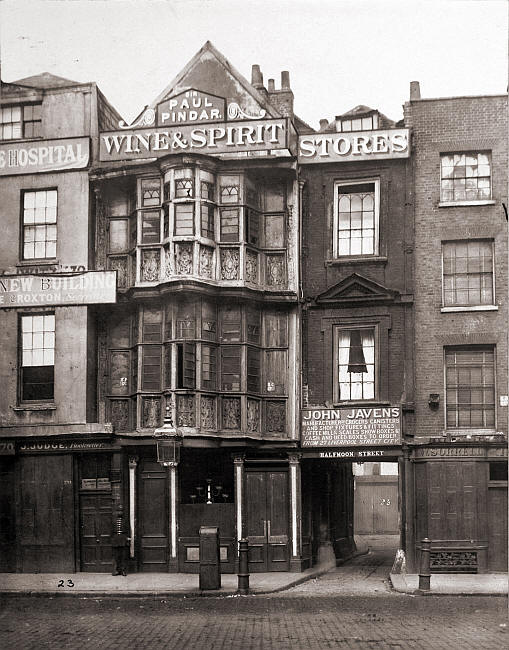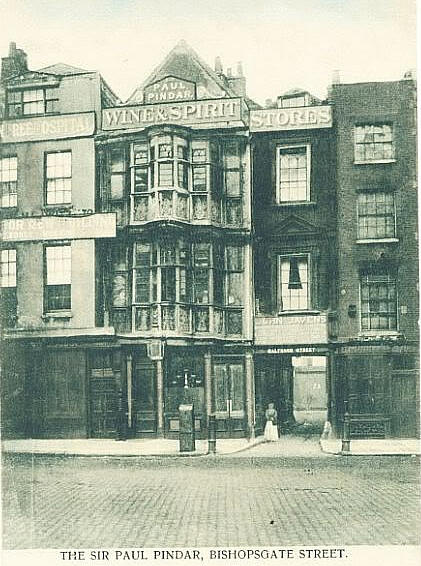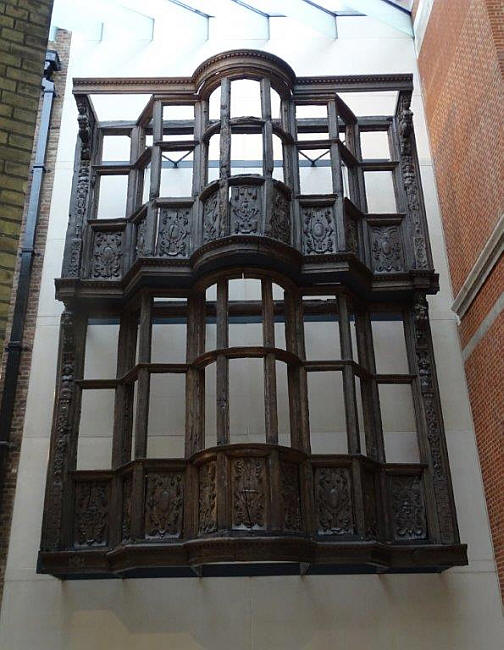Sir Paul Pindar, 169 Bishopsgate EC2 At 169 Bishopsgate Street without in 1851 and up to 1915; Another house of almost equal interest to Crosby Hall was the Paul Pindar Tavern, lately pulled down. It was situated on the west side of Bishopsgate Street, further north than the old
palace of King Richard III, and was originally the residence of Sir Paul Pindar, a wealthy City merchant trading to the Levant. In the reign of James I. Sir Paul went to Turkey as Ambassador, to represent that most sagacious monarch. His mission was a successful one, and helped
materially to extend and facilitate the trade between England and the dominions of the Sublime Porte. It is said that when he returned from the East he brought with him a magnificent diamond, valued at £30,000, which King Jamie coveted greatly, and wanted to buy, but was unable
to pay for it in cash. The Turkey merchant declined to part with his property on credit, and so no deal came off. Sir Paul, however, being an obliging man, and willing to meet his Majesty half-way, used to lend him the precious jewel on hire, when he wanted to make a greater
display than usual at the reception of some foreign ambassador or any- other festivity. King Charles I, after his father's death, was also in the habit of hiring the great Pindar diamond when he too wished to appear en grande tenue on great occasions. What became of the sparkling
gem, how or to whom it was disposed of eventually, history is silent. The grand old house, one of the very finest specimens of the late Tudor style in London, was spared in the Great Fire of 1666, and went through various vicissitudes until 1810, when it was converted into a
tavern of excellent repute. Latterly it fell into a dilapidated state of repair ; but it was not demolished until purchased by the Great Eastern Railwaj' Company to make way for the suburban station of their line, and form a portion of the largest railway terminus in London.
The tavern to the very last retained the name of its famous owner, Sir Paul Pindar, and when " broken up "' must have contained some rare and fine specimens of carvings and other workmanship of the early part of the seventeenth century. This became a tavern in the early 17th
century in the former house of Sir Paul Pindar. This building survived until its demolition in November 1890; to make way for the expansion of Liverpool Street railway station. Exactly what was its relationship with the pub of the same name that continued in Bishopsgate is not
yet clear. The skeletal, timber remains of the pub’s frontage were acquired by the Victoria & Albert Museum and can be seen in the Medieval & Renaissance Galleries. pubhistory

 Read on Twitter
Read on Twitter





